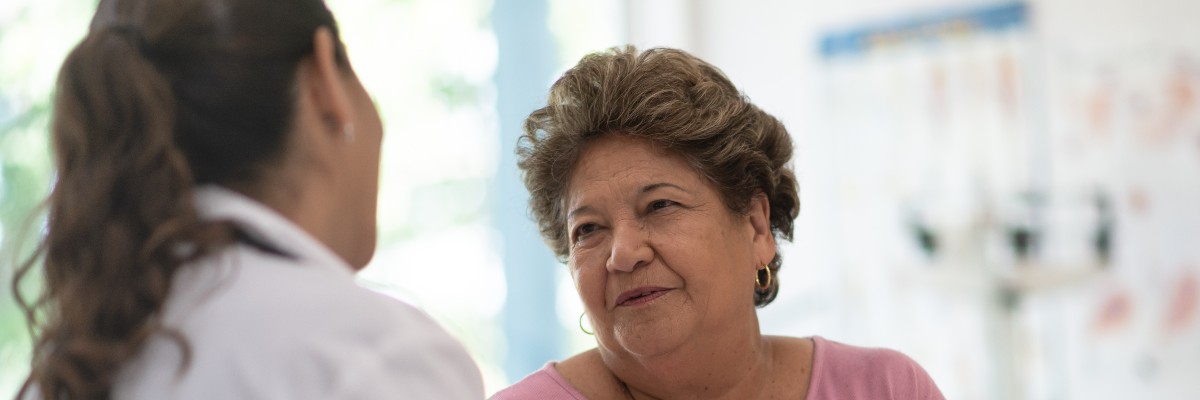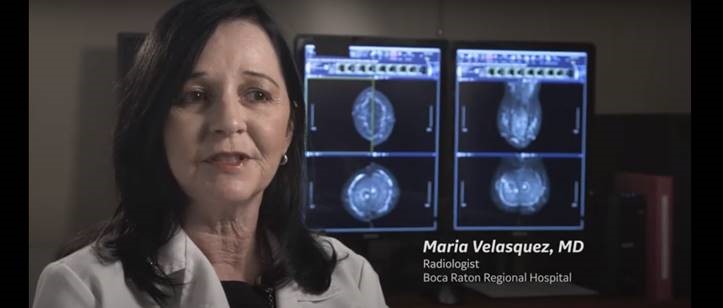Are you part of the largest and fastest growing ethnic group in the US? Then you are most likely Spanish-speaking and it could be that you may tend to be forgotten when it comes to messaging about breast care. Which is something we want to change right here, right now. Because breast cancer is the leading cause of cancer-related death in Hispanic women.[1]
Hispanic women are less likely to be diagnosed in the earliest stage of breast cancer
The good news is that your risk of breast cancer is about 20 percent lower than that of women in the general population. Over your lifetime, you have about an 11 percent chance of developing breast cancer compared to 13 percent for white women and 12 percent for African American women.[2]
However, that risk differs based on which country you (or your family) hail from. For instance, women of Puerto Rican or Cuban background have a breast cancer risk similar to that of white women. The other thing is that Hispanic women in the US, regardless of country of origin, have higher rates of breast cancer than women who live in their native countries. Thus, the rate of breast cancer for Mexican Americans is twice as high as the rate for women living in Mexico.
Which brings us to our main point: Hispanic women are less likely to be diagnosed in the earliest stage of breast cancer compared to white women (57 percent vs 65 percent) and can be more likely to die from the disease. Mexican and Puerto Rican women have an even higher risk of death.[3]
Language can be a barrier to breast screening
One reason cited for these statistics: language can be a barrier to breast screening. Women in the US who only speak Spanish are 27% less likely to get a screening mammogram than English speakers, according to a study presented at the American College of Surgeons (ACS) Clinical Congress 2020.[4] And Spanish speakers aren't the only ones -- by and large, women who speak limited English are less likely to receive breast cancer screening.
“Spanish-only speakers appear to have a 27 percent less likelihood of having a screening mammogram than English speakers,” said lead study investigator Jose L. Cataneo, MD, a general surgery resident at the University of Illinois at Chicago (UIC)/Metropolitan Group Hospitals.[5]
During COVID, Hispanic women are less likely to go for annual screening
“During these difficult COVID times, unfortunately not as many women are going in for annual screenings, but Hispanic women are even less likely. Here at the Christine E. Lynn Women’s Health & Wellness Institute at Boca Raton Regional Hospital, we are doing everything to encourage women of all backgrounds to maintain their regular screenings. We have Spanish speaking staff to help ensure that everyone will get results the same day, and that they will be provided with educational materials in Spanish to ensure they are not overlooked,” says Dr. Maria Victoria Velasquez, breast radiologist from Boca Raton Regional Hospital.
Get the education you need in your language and get screened. Ninety-nine percent of women diagnosed at the earliest stage of breast cancer will still be alive five years later compared to just a third of women diagnosed once the cancer has spread.[6]
Unfortunately, studies find that Spanish speakers living in the US, particularly those from Mexico and Central and South America, are less likely to get cancer screenings, including mammograms, than other ethnicities.[7] They also wait longer between mammograms and don’t follow up as soon as they should regarding suspicious findings.[8]
Don’t be one of those women. Make your mammogram appointment now.
If you have health insurance, it costs you nothing out of pocket to get a mammogram. If you don’t have insurance, the mammography center will probably give you a discount.
We’ve also created an app to walk you through the mammogram experience. You can download it here in Spanish.
Don’t be a statistic. Don’t wait and don’t skip.
References
[1] Power E J, Chin M L, Haq M M (February 26, 2018) Breast Cancer Incidence and Risk Reduction in the
Hispanic Population. Cureus 10(2): e2235. DOI 10.7759/cureus.2235
[2] Howlader N, Noone AM, Krapcho M, et al. SEER Cancer Statistics Review, 1975-2017, National Cancer Institute. Bethesda, MD, https://seer.cancer.gov/csr/1975_2017/, based on November 2019 SEER data submission, posted to the SEER web site, April 2020.
[3] Hunt BR. Breast Cancer Prevalence and Mortality among Hispanic Subgroups in the United States, 2009–2013. J Cancer Epidem. 2016. https://doi.org/10.1155/2016/8784040
[4] Disparities in Screening for Breast Cancer Based on Limited Language Proficiency. A Retrospective Cohort Propensity Score Matched Study. Scientific Forum, American College of Surgeons Clinical Congress 2020, October 3-7, 2020.
[5]Disparities in Screening for Breast Cancer Based on Limited Language Proficiency. A Retrospective Cohort Propensity Score Matched Study. Scientific Forum, American College of Surgeons Clinical Congress 2020, October 3-7, 2020.
[6] American Cancer Society. Breast Cancer Facts & Figures 2019-2020. Atlanta: American Cancer Society, Inc. 2019.
[7] Haile RW, John EM, Levine AJ, et al. A review of cancer in US Hispanic populations. Cancer Prevention Research; 2012. 5(2), 150-163.
[8] Davis JL, Ramos R, Rivera-Colón V, et al.: The Yo me cuido® Program: Addressing breast cancer screening and prevention among Hispanic women. J Cancer Educ. 2015, 30:439–46.
[HM(H1]Is there any Don’t Skip content we can link to here?


